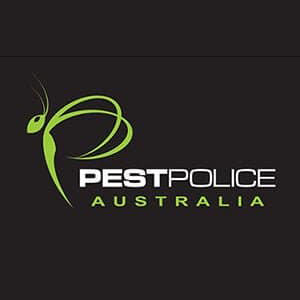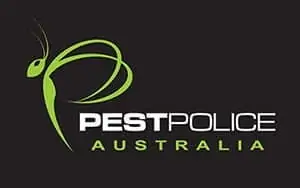Termites are recognised as one of the most costly pests, especially for homeowners because of their harmful nutritional demands.
Termites, like other pests, are diverse, with around 2,750 species found globally.
Termites of any kind are terrible news for your home. Learn the distinctions between the species, and you’ll be able to do all in your power to keep these invaders from destroying your property.
The two most frequent species of termites discovered in Australian properties are damp-wood termites and subterranean termites.
So, what’s the difference between the two types of termites?
Major Differences
Subterranean termites infest dry timbers such as what your home consists of and damp-wood termites infest damp timbers that are in soil contact.
Subterranean termites construct mud tubes to dig through the earth and into your property. It may be disastrous if you have either in your home or on your land.
Subterranean Termites
These termites construct their colonies in bare terrain or stumps, nest in the earth, and grow into massive termite colonies. They construct tight tunnels between their food and their nests. They require wet soil and darkness to survive.
Subterranean termites are considerably more dangerous than damp-wood termites because they cause far more damage. Their colonies can grow to be one million strong. The body of a subterranean termite is soft and white, with no eyes. They are usually scarcely more than a centimetre long.
Termites dwell in communities that have a king and a queen, as well as servants like soldiers, labourers, and alates – winged swarmer termites. Troops are stationed around the royal couple to protect them.
The queen may grow to be up to 10 cm long and her life expectancy is around fifteen years. During their undisturbed rule, a few million termites thrive.
What Do Subterranean Termites Look Like?
The appearance of subterranean termites and worker damp-wood termites is identical. Where they diverge is in the soldier and alate cases. Soldier termites have big yellowish/brown heads, but alates – the flying termites, are generally dark brown/black in appearance.
Where Do They Live?
Subterranean termites, as opposed to damp-wood termites, prefer to dwell underground. This is due to the fact that certain termite species require a supply of moisture to thrive. Subterranean termites require a ground connection to maintain their nests and tunnels damp enough to survive, as well as material to create tunnels and nests.
They may build above-ground nests if there is sufficient moisture available.
Signs To Look Out For
Mud tubes are a significant indicator of a subterranean termite infestation because of their love and need for high moisture conditions.
Subterranean termites travel around above ground via mud tubes to search for food. By maintaining the termites in a humid environment, the tubes protect them from predators.
These tubes are made of a combination of dirt, wood, saliva, and excrement. They are dark brown in colour and are commonly observed along with a property’s foundations when termites enter the building from the surrounding earth, as well as at floor joints inside the house.
How Can You Spot A Nest Of Subterranean Termites?
Subterranean termites require constant moisture exposure, which is why they construct their nests beneath the soil.
Their colonies are constructed of galleries linked by mud tunnels. These mud tunnels also extend to their food sources, allowing worker termites to stay damp and protected from the sun while hunting for food.
As a result, you’re more likely to notice the mud tubes spreading from a subterranean termite nest than the nest itself. These mud tubes are more likely to be discovered at ground levels where the foundations of structures contact the earth.
Damp-wood Termites
Damp-wood termites are one of the biggest of all termite species, with lengths ranging from a third of an inch to well over 1/2 inch. In moist and wet places such as fence posts, trees, wood siding in direct touch with the ground, rotting eaves, sheds, and other similar sites, damp-wood termites may be found thriving. The moisture level of the wood must be high enough to be of interest to the damp-wood termite in order for them to thrive; otherwise, they will not be able to survive.
Because of their preference for very wet and rotting wood, damp-wood termites are sometimes referred to as “rotten-wood” termites. Damp-wood termites need a continuous water supply or close touch with water in order to live, and they will only rarely if ever, be able to survive in a high humidity environment if they are denied access to water.
They need a lot of wetness, humidity, and access to water in order to thrive. As a result, they prefer to build their nests in trees, wet logs, and untreated posts. Dampwood termites have also been seen infesting live trees in the wild.
What Do Damp-wood Termites Look Like?
Termites found in damp-wood trees are the biggest termites when measured in terms of sheer size. Their colony sizes, on the other hand, are among the lowest in the world.
Royals are between one-half and five-eighths of an inch in length, depending on their gender. Additionally, nymphs may grow to be five-eighths of an inch in length, whereas soldiers can grow to be three-fourths of an inch in length.
Damp-wood termites are often brown in appearance, although they may be any shade from dark to light, and they can even be scarlet in colour, particularly towards their abdomens. Nymphs have a milk hue to them.
Unlike subterranean termites, which build shelter tubes to protect themselves, damp-wood termites do not need to do so and may live entirely inside the wood that they consume.
It is possible that these termites may remain undetected for many years because of their cryptic behaviour, which involves plugging holes into the wood they are infesting with faecal pellets in order to maintain humidity.
Where Do They Live?
Damp-wood termites are a kind of termite that lives entirely inside the wood that they feed on and excavates huge open tunnels. They behave similarly to subterranean termites in that they may infest wood for years before being found, which is most likely to occur when a mature colony of alates swarms.
This process may take many months, with different species swarming at various periods throughout the year. Colonies are often composed of a few individuals.
If they are discovered in a structure, it is a sign that there is a moisture issue. The majority of the time, they are insignificant pests that can be managed in buildings by eliminating the source of moisture. In live trees, they prefer to feed on dead and decaying wood rather than living wood.
These termites, as opposed to the subterranean termite, are linked with decaying wood and may be found in rotting boards, as well as near leaking showers and bathtubs, roofs, and other places where there is little ventilation.
It is possible for old gutters to get clogged with leaves, resulting in a buildup of moisture in wall cavities, which is a favourable habitat for the damp-wood termite.
It is necessary for them to stay concealed and maintain humidity by covering entrance holes with their own faeces, thereby closing off the galleries where they dwell from the outside world. In contrast to subterranean termites, they do not typically come into touch with the soil and do not excavate underground tunnels.
Signs To Look Out For
In order to combat this aggressive insect, it is recommended that moisture management, rather than chemical treatment, be used initially. Many termite insecticides can and will successfully resolve an infestation in circumstances where moisture management cannot be applied. Spot or localised applications of many termite insecticides can and will effectively resolve an infestation in these conditions.
In order to effectively manage damp-wood termites, it is important to identify any water problems in or around the house and other buildings and to address them as soon as possible. Damp-wood termites may be attracted to wood that has been damaged by water or that has been placed directly on the ground.
It is possible to observe and identify signs of infestation including the shedding of the wings of the termite, ejected wood pellets, a velvety appearance of the wood as if it had been finely sandpapered, piles of faecal pellets that are coloured according to the wood being eaten, are elongated and have rounded ends, as opposed to the flattened surfaces of subterranean termite pellets.
It is essential to decrease the amount of moisture in infected regions in order to manage the issue. In order to do this, it is necessary to fix any leaky plumbing, increase ventilation, verify that drains are working, and modify buildings so that water contact with wood and soil is minimised.
Conclusion
Unfortunately, detecting termite symptoms may be difficult, and infestations sometimes go undetected until it is too late. However, understanding the distinction between damp-wood and subterranean termites as well as asking help from pest control experts can help safeguard your house from these wood-eating insects.
It is important to understand how to avoid termites, regardless of the type. It is critical to remove any moisture problems in your home in order to prevent subterranean termites.
This includes ensuring your yard has excellent drainage, immediately repairing faulty pipes, and being mindful of locations where your property comes into contact with the earth.
Keep firewood stacks away from your property and examine your deck or patio for indications of damage regularly to prevent dry-wood termites. Having frequent inspections undertaken by a competent termite treatment Melbourne company is the greatest method to protect yourself from termites.
Contact us for information on the different types of pests and which solutions are more suited for your needs.

